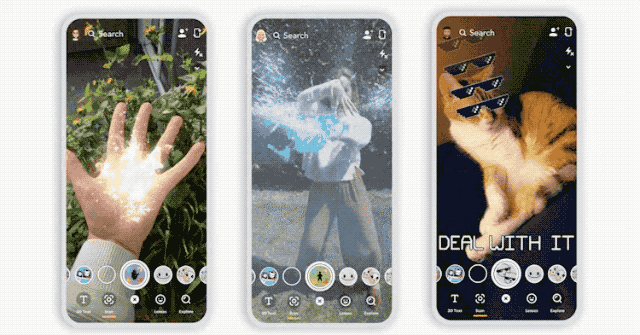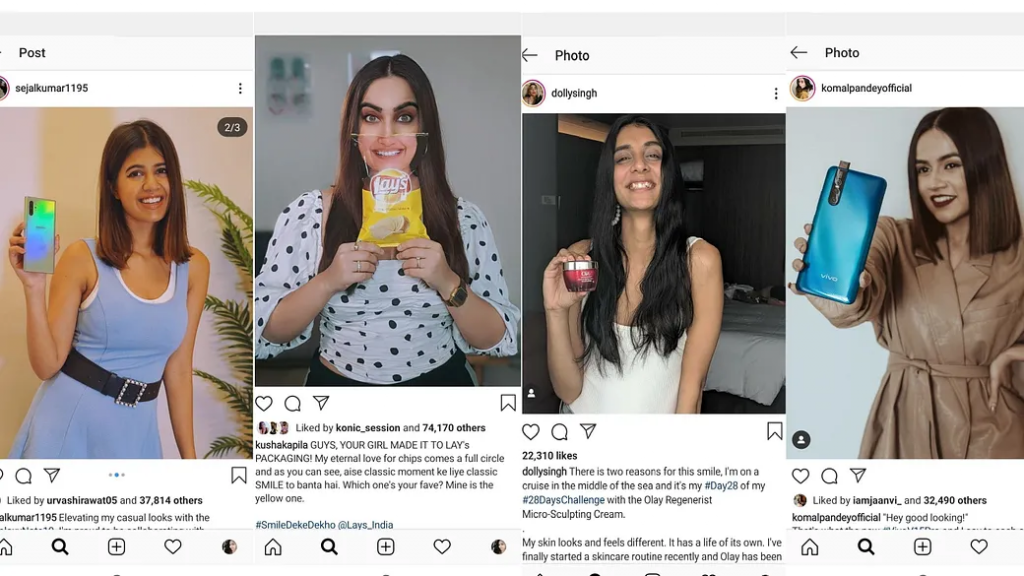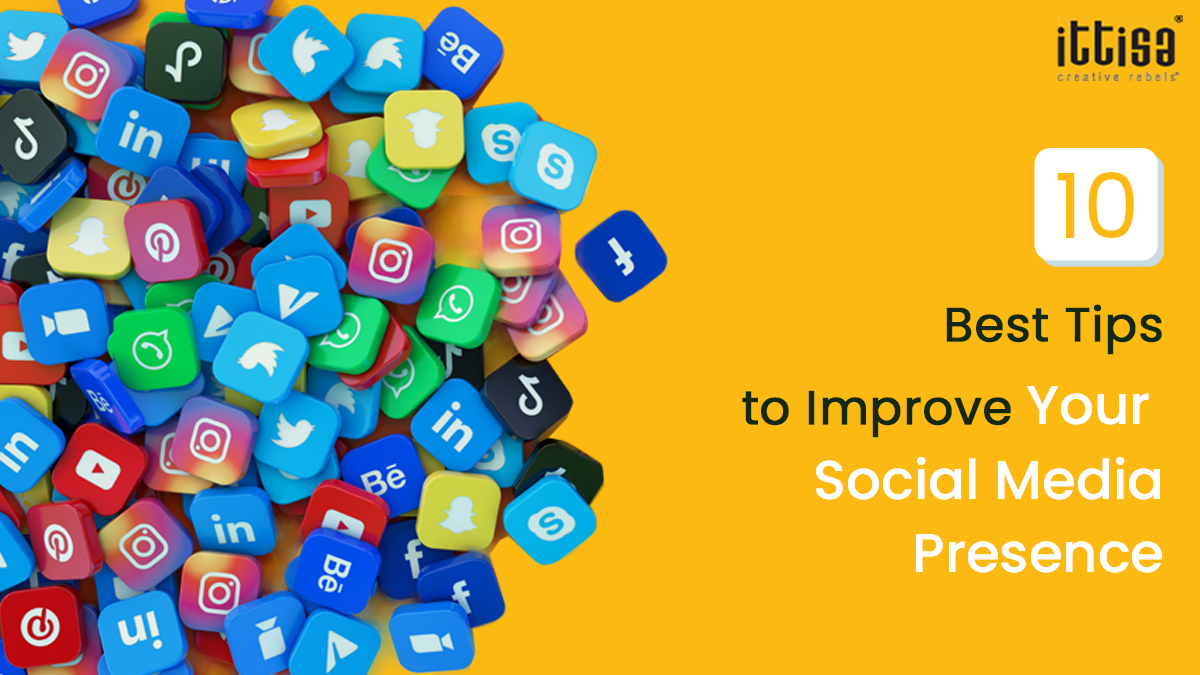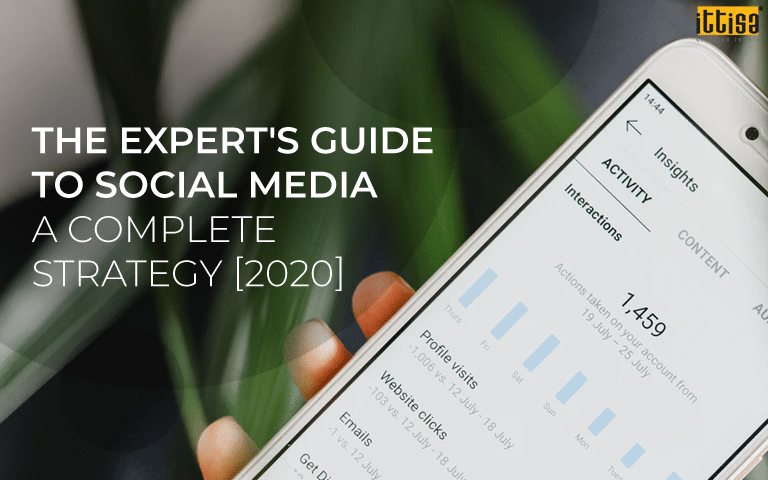February 28, 2020
Social Media Marketing: The Complete Guide for Everyone 2020
Do you know that people spend an average time of 5 years and 3 months on social media in their lifetime? That’s like climbing Mount Everest 32 times and walking your dog 93K times!
Social media is like the top player in the game of digital marketing. It has become the place where people go when they want a little break from work, when they’re feeling low or when they are bored - in other words, almost all the time.
 Source: medium.com
Brands go where people are, and that’s the reason why so many businesses are on social media platforms to engage with their audience and promote their products or services.
Source: medium.com
Brands go where people are, and that’s the reason why so many businesses are on social media platforms to engage with their audience and promote their products or services.
 Source: Quora
Source: Quora
 Source: customlogocases.com
Think about your followers that you would like to reach and how they can be classified. For example, if you have a brand that sells sportswear and shoes, you would probably classify your audience as sports lovers and people interested in health and fitness. Once you understand the buyer persona, it will be easier to decide on the kind of content that should be created for maximum engagement.
Source: customlogocases.com
Think about your followers that you would like to reach and how they can be classified. For example, if you have a brand that sells sportswear and shoes, you would probably classify your audience as sports lovers and people interested in health and fitness. Once you understand the buyer persona, it will be easier to decide on the kind of content that should be created for maximum engagement.

 Your social media contest strategy should ideally depend on 2 things - what the target audience will value and what would make sense for your brand. Building an incentive around both these aspects will ensure that the followers you gain during this time do not remain unengaged and unfollows your page after a brief time period.
Your social media contest strategy should ideally depend on 2 things - what the target audience will value and what would make sense for your brand. Building an incentive around both these aspects will ensure that the followers you gain during this time do not remain unengaged and unfollows your page after a brief time period.
 Source: ezoic.com
Long format posts: Long-form posts are given more priority by LinkedIn algorithms as they are more engaging. Try creating posts that are around 700 characters, including emojis, mentions and hashtags to increase visibility.
Source: ezoic.com
Long format posts: Long-form posts are given more priority by LinkedIn algorithms as they are more engaging. Try creating posts that are around 700 characters, including emojis, mentions and hashtags to increase visibility.
 Source: engadget
In 2020, other social channels are also expected to introduce AR on their respective platforms. Facebook has also introduced an AR studio to build interactive camera experiences.
Through virtual stores, try-ons, AR at Live events - brands can create rich experiences while speeding up the buying process. Moreover, if you are the first one to make use of these trends, it becomes an added advantage to gain popularity.
Source: engadget
In 2020, other social channels are also expected to introduce AR on their respective platforms. Facebook has also introduced an AR studio to build interactive camera experiences.
Through virtual stores, try-ons, AR at Live events - brands can create rich experiences while speeding up the buying process. Moreover, if you are the first one to make use of these trends, it becomes an added advantage to gain popularity.
 Source: Afaqs
Whether you run a local business or a national company, social media marketing is an integral part of your marketing strategy. It helps to validate your brand, increase brand awareness and customer loyalty and ensures overall growth of the business.
Moreover, the service is not at all stressful to manage if you have the right digital marketing partner. To know more about social media marketing and how it can boost your business, leave us a message and we’ll get back to you soon.
Source: Afaqs
Whether you run a local business or a national company, social media marketing is an integral part of your marketing strategy. It helps to validate your brand, increase brand awareness and customer loyalty and ensures overall growth of the business.
Moreover, the service is not at all stressful to manage if you have the right digital marketing partner. To know more about social media marketing and how it can boost your business, leave us a message and we’ll get back to you soon.
 Source: medium.com
Brands go where people are, and that’s the reason why so many businesses are on social media platforms to engage with their audience and promote their products or services.
Source: medium.com
Brands go where people are, and that’s the reason why so many businesses are on social media platforms to engage with their audience and promote their products or services.
How does a brand benefit from social media marketing?
According to Buffer, 73% marketers say that social media marketing has been very effective for their business. Social media marketing benefits can be defined in several ways, based on business types and perspectives. Here are some of the major advantages for brands that leverage the power of social -1. Increase Brand Awareness
With around 3.80 billion people on social media in 2020, this platform becomes a natural place for reaching out to your potential target audience. Sharing content related to your products or services here can boost as well as improve brand awareness. Social media has been helping a lot of brands boost awareness and increase engagement in the form of reactions, comments, and shares. It also helps drive website traffic if you include website links in the bio, profile or posts of your social accounts. It’s not that people interact only with brands they are familiar with on social media. Studies have revealed that 60% of Instagram users discover new brands on the platform.2. Humanize the Brand
Creating a real human connection with the audience is one of the biggest benefits of social media marketing. Customers believe in a brand only when they see real proof of the promises that are being made. Humanizing a brand means to break away from the age-old robotic marketing techniques and instead focus on being more personal and relatable. 92% of consumers prefer advertising to be in a storytelling format. Moreover, humanizing a brand also helps to create a sense of trust and build credibility. Here’s an example how Netflix converses with their audience. Source: Quora
Source: Quora
3. Improve conversions & generate quality leads
Social media is an easy and cost-effective way to get your audience interested in a product and encourage them to make a purchase. By promoting and sharing products, you can boost conversions, enhance lead generation and thus increase sales. Moreover, lead generation has become such an integral part of social media that several platforms like Facebook and Instagram offer ad formats designed specifically for generating leads. Conversions and lead generation can be done in several ways such as running contests, hosting live videos, implementing social media campaigns and encouraging sales through social profiles like Facebook Shop section and Instagram Shopping feature.4. Keep a check on competition
With social media, you can keep a tab on your competitors on the basis of their online marketing strategies, products, campaigns and interaction with customers. Getting this information will help you get an idea of what is working and what isn’t for your competitors. This will further help you to modify your social media strategies in order to stay ahead in the race. Moreover, reviewing your competitors’ online activity will help you ensure that your strategies are unique and stand out among others.5. Build an everlasting connection
When you connect and engage with your followers on a regular basis, it helps to foster the relationship between a brand and its customers. Almost all social media users will log into their accounts at least once, whereas most users log in multiple times. Posting entertaining and informative content daily will pique their interest and keep them engaged. Interacting with your followers on the posts, replying to their comments and clarifying their queries are also important to build and maintain your relationship. This way, your brand will always be at the top of the mind of your audience and when they decide to make a purchase, you automatically become their first choice. Understanding pain points and creating giveaways on social media are also successful ways to build brand trust and value your customer’s support.How to Create a Successful Social Media Strategy?
Without a proper strategy in place, social media marketing can prove to be difficult and unsuccessful. A well thought strategy is required to guide your future actions and carry out your social marketing campaign. The more specific the strategy, the more effective is the execution. Here are the steps for creating a successful social media strategy -1. S.M.A.R.T. Goals
The first step to create a social media strategy is to have proper goals and objectives in place. Following the S.M.A.R.T. goal framework can help you take the necessary actions that will ensure positive results and lead to better ROI and marketing success. The S.M.A.R.T. goal states that your marketing strategy must be - Specific Measurable Attainable Relevant Time-bound2. Know your audience and buyer persona
The next step is to understand your target audience and determine the buyer persona, in order to fulfil their needs and interests accurately. What your audience wants is going to be the core of all your content. Source: customlogocases.com
Think about your followers that you would like to reach and how they can be classified. For example, if you have a brand that sells sportswear and shoes, you would probably classify your audience as sports lovers and people interested in health and fitness. Once you understand the buyer persona, it will be easier to decide on the kind of content that should be created for maximum engagement.
Source: customlogocases.com
Think about your followers that you would like to reach and how they can be classified. For example, if you have a brand that sells sportswear and shoes, you would probably classify your audience as sports lovers and people interested in health and fitness. Once you understand the buyer persona, it will be easier to decide on the kind of content that should be created for maximum engagement.
3. Decide on the social platforms
In social media marketing, determining the platforms where you want to market your business is crucial to be successful. Choosing the platform depends on the type of your product/service and where your target audience spends the maximum time on social. It also depends on what you wish to achieve from social media marketing. The top platforms include - Facebook - Good for lead generation as it can be highly customized for targeting a specific audience group. Facebook is also apt for building a customer-brand relationship, bringing out the human side of your brand and converting leads into customers. However, the competition is also very high here. Twitter - Suitable for businesses that are about immediateness, for reaching out announcements, breaking news, important updates and moment marketing. Text-based content is known to perform the best on Twitter. LinkedIn - The best choice for B2B businesses, and especially for lead generation. LinkedIn is also ideal for editorial content, building brand authority and engaging leads through conversions. Instagram - Beneficial for businesses who have millennials as the target audience, as they cover the largest portion of the audience in this platform. It is a great platform for art, retail, food, entertainment and beauty businesses. Instagram is apt for engagement, building relationships and lead generation.
4. Create Compelling Content
86% of businesses claim that content marketing has helped them fulfil their brand awareness goals. It is important to create good quality content on social media that will be compelling enough for the audience to follow and interact with your page. It is evident that your followers will also see content from your competition and businesses of the same industry. Therefore, a good content marketing strategy can ensure that your brand remains ahead of competition and followers prefer your content over others. Taking advantage of the platform features in your content strategy is also a good idea. For example, creating Live Videos on Facebook during a new product launch or promoting giveaways on Instagram story ads can help showcase your brand’s creativity. Promoting user-generated content is also useful to build connection and credibility.5. Know how often to post
Quality over quantity should be the idea when posting on social media platforms. Posting too frequently can make you a spammer, and posting irregularly can lead to people forgetting your brand. Both these conditions will have a negative effect on the follower count and engagement. Follow post frequency standards on social media based on platforms and industry to get the best level of reach and engagement. The key to success here is to post fresh content, varieties (images, GIFs, videos) and use mentions and hashtags for greater reach. Here’s how much should you post on respective channels based on several research & studies - Facebook - 1 post per day Twitter - 15 tweets per day Instagram - 1-2 posts per day Pinterest - 11 pins per day LinkedIn - 1 post per day6. Analyze results
In order to ensure that your strategy is delivering successful results, it is necessary to keep a track on the performance of your posts on every social channel. This can be done if you review and manage social media metrics. Social media metrics can be defined as data that provide insights regarding the success of your posts and the impact on the audience on respective channels. Here are some of the vital metrics that should be tracked -- Engagement - This calculates the reactions, comments, shares and replies on the posts. There can be platform-specific kinds of engagement that are measured, such as the ‘Saved’ posts option on Instagram or the ‘Pinned’ post on Pinterest.
- Reach - This counts the total number of people who have seen content that is related to your profile or page.
- Impressions - This counts the number of times your post has been viewed, even if the audience has not clicked on it. It is like the user is scrolling through the newsfeed, but not clicking on anything.
- Followers - The total number of people on your profile who have followed your page to see your content daily are your followers.
- Shares - The posts that the followers take from your page and share it in theirs, among their friends/followers are calculated as shares.
- Profile Visits - It counts the total number of people who have viewed your social pages.
- Video Views - The number of views received by your video on channels that can play videos.
- Mentions - It counts the number of times the audience has mentioned your profile in their posts.
- Tags - The number of times when your brand name or the hashtag you use is used by the audience in other posts.
- Repost - When content from your page is posted by your follower or audience, it is called repost.
What are the social media marketing strategies that brands should follow in 2020?
Social media has completely transformed how people purchase, sell and interact with products and brands. The industry is still up for ample growth and opportunity, but the dynamics are always changing. In order to be successful, it is important to know and stay ahead of trends. Take a look at the top social media marketing strategies for 2020 that can help your brand rule the digital world -1. Focus more on contests
For a long time, running social media contests has been mostly about attracting new users and increasing follower count on your business page. However, in 2020, the motive for running contests has evolved to focus more on engagement and creating a connection with the audience. It also has other benefits like increasing brand awareness, getting feedback from customers and turning regular followers into a loyal community. Your social media contest strategy should ideally depend on 2 things - what the target audience will value and what would make sense for your brand. Building an incentive around both these aspects will ensure that the followers you gain during this time do not remain unengaged and unfollows your page after a brief time period.
Your social media contest strategy should ideally depend on 2 things - what the target audience will value and what would make sense for your brand. Building an incentive around both these aspects will ensure that the followers you gain during this time do not remain unengaged and unfollows your page after a brief time period.
2. Leverage the power of video
“99% of marketers using video will continue to do so in 2020.” The popularity of video content is evident with the increasing demand of video platform services - from Hulu and Netflix and IGTV and TikTok. And in all of this, the dominance of YouTube cannot be overlooked. This year, video marketing is going to get prominence by more businesses for greater reach and awareness. “55% of people watch videos online every day, and social media videos generate up to 1200% more shares than texts and images combined.” Social media videos are impactful because they are direct, more engaging and relatable. Moreover, social videos do not always require a very high budget. It only requires high-quality production, a compelling message, with a dash of innovation and/or humour. A report states that TikTok users are known to spend around 45 minutes daily on the app, which is higher than Facebook. Even being a young app, it has gained immense popularity and more social media marketers are likely to spend their ad budgets on TikTok this year.3. Make the most out of LinkedIn
LinkedIn has a lot of features that are underrated but quite effective to amplify engagement on the platform. A LinkedIn expert recommends - “treat your LinkedIn company page as a campaign.” Create a visually engaging company profile by utilizing these features: Banners: Keeping the default blue background as the banner is a strict no-no if you want activity on your LinkedIn page. Instead, use campaign-style images on the banner to get viewers interested in your brand. CTA buttons: LinkedIn provides a feature of adding CTA buttons to drive website traffic. This feature can be used to send leads to sign-up and registration forms, blog or product pages. The button is displayed just under the profile picture and banner. You can also change the CTA button from time to time to drive traffic to different landing pages. Source: ezoic.com
Long format posts: Long-form posts are given more priority by LinkedIn algorithms as they are more engaging. Try creating posts that are around 700 characters, including emojis, mentions and hashtags to increase visibility.
Source: ezoic.com
Long format posts: Long-form posts are given more priority by LinkedIn algorithms as they are more engaging. Try creating posts that are around 700 characters, including emojis, mentions and hashtags to increase visibility.
4. Augmented Reality for Social Media
Augmented Reality (AR) has already started making an impact on social media with Snapchat introducing filters where you can add elements while using the selfie camera. This feature has been used by several brands to plan engaging social media campaigns. Source: engadget
In 2020, other social channels are also expected to introduce AR on their respective platforms. Facebook has also introduced an AR studio to build interactive camera experiences.
Through virtual stores, try-ons, AR at Live events - brands can create rich experiences while speeding up the buying process. Moreover, if you are the first one to make use of these trends, it becomes an added advantage to gain popularity.
Source: engadget
In 2020, other social channels are also expected to introduce AR on their respective platforms. Facebook has also introduced an AR studio to build interactive camera experiences.
Through virtual stores, try-ons, AR at Live events - brands can create rich experiences while speeding up the buying process. Moreover, if you are the first one to make use of these trends, it becomes an added advantage to gain popularity.
5. Relatable content
There is surplus content always available on social media and information is constantly shared on these platforms. This at times can make it difficult to trust everything that audiences see on social. In order to be successful and build trust and loyal customers for your brand, transparent, authentic and relatable content is a must. According to National Geographic, “Relevant, Relatable and Timely are the 3 pillars for creating engaging content.” Create content that resonates with the target audience and that is both meaningful and interesting. You can also opt for influencer marketing, since they identify more easily with their target audience, as 49% consumers depend on recommendation from social media influencers. Source: Afaqs
Whether you run a local business or a national company, social media marketing is an integral part of your marketing strategy. It helps to validate your brand, increase brand awareness and customer loyalty and ensures overall growth of the business.
Moreover, the service is not at all stressful to manage if you have the right digital marketing partner. To know more about social media marketing and how it can boost your business, leave us a message and we’ll get back to you soon.
Source: Afaqs
Whether you run a local business or a national company, social media marketing is an integral part of your marketing strategy. It helps to validate your brand, increase brand awareness and customer loyalty and ensures overall growth of the business.
Moreover, the service is not at all stressful to manage if you have the right digital marketing partner. To know more about social media marketing and how it can boost your business, leave us a message and we’ll get back to you soon. 


